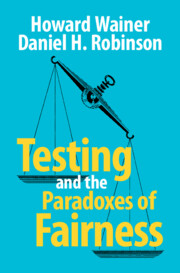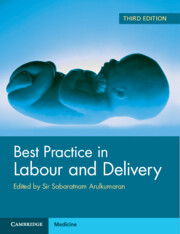Refine search
Actions for selected content:
3386111 results
1 - What Is a Gospel?
- from Part I - First Principles: What Is a Gospel, According to Origen?
-
- Book:
- The Life of Jesus in the Writings of Origen of Alexandria
- Published online:
- 26 September 2025
- Print publication:
- 16 October 2025, pp 5-16
-
- Chapter
- Export citation
Preface
-
- Book:
- Polynomial Functors
- Published online:
- 27 September 2025
- Print publication:
- 16 October 2025, pp xiii-xx
-
- Chapter
- Export citation
Reviews
-
- Book:
- Violence, Power, and Society in the Dead Sea Scrolls
- Published online:
- 29 September 2025
- Print publication:
- 16 October 2025, pp ii-ii
-
- Chapter
- Export citation
Chapter 3 - The Importance of Religion in Achaemenid Leadership
-
-
- Book:
- Leadership in the Ancient World
- Published online:
- 14 September 2025
- Print publication:
- 16 October 2025, pp 58-87
-
- Chapter
- Export citation
7 - Polynomial comonoids and retrofunctors
- from Part II - A different category of categories
-
- Book:
- Polynomial Functors
- Published online:
- 27 September 2025
- Print publication:
- 16 October 2025, pp 295-376
-
- Chapter
- Export citation
4 - An Inframarginalist Argument for Mandating the Use of Pro-Consumer Boilerplate
-
-
- Book:
- Toward an Inframarginal Revolution
- Published online:
- 26 September 2025
- Print publication:
- 16 October 2025, pp 100-123
-
- Chapter
- Export citation

Testing and the Paradoxes of Fairness
- Coming soon
-
- Expected online publication date:
- October 2025
- Print publication:
- 30 October 2025
-
- Book
- Export citation
1 - “Active Methods of Showing Dislike”
-
- Book:
- Minority Identities in Nigeria
- Published online:
- 26 September 2025
- Print publication:
- 16 October 2025, pp 28-59
-
- Chapter
- Export citation
List of Figures
-
- Book:
- Chips from a Calcutta Workshop
- Published online:
- 26 September 2025
- Print publication:
- 16 October 2025, pp xi-xii
-
- Chapter
- Export citation
2 - From Contextless Accounts to Holistic Portraits of Violence
-
- Book:
- Violence, Power, and Society in the Dead Sea Scrolls
- Published online:
- 29 September 2025
- Print publication:
- 16 October 2025, pp 43-67
-
- Chapter
- Export citation
Preface
-
- Book:
- Tied Up in Tehran
- Published online:
- 28 September 2025
- Print publication:
- 16 October 2025, pp ix-xii
-
- Chapter
- Export citation
Dedication
-
- Book:
- Minority Identities in Nigeria
- Published online:
- 26 September 2025
- Print publication:
- 16 October 2025, pp v-vi
-
- Chapter
- Export citation
8 - Conclusion
-
- Book:
- Violence, Power, and Society in the Dead Sea Scrolls
- Published online:
- 29 September 2025
- Print publication:
- 16 October 2025, pp 226-236
-
- Chapter
- Export citation
Preface: What Managers Should Do
-
- Book:
- Applied Healthcare Economics
- Published online:
- 26 September 2025
- Print publication:
- 16 October 2025, pp xv-xviii
-
- Chapter
- Export citation
Part I - The category of polynomial functors
-
- Book:
- Polynomial Functors
- Published online:
- 27 September 2025
- Print publication:
- 16 October 2025, pp 1-2
-
- Chapter
- Export citation

Best Practice in Labour and Delivery
- Coming soon
-
- Expected online publication date:
- October 2025
- Print publication:
- 06 November 2025
-
- Book
- Export citation
Dedication
-
- Book:
- Modern Slavery and the Governance of Global Value Chains
- Published online:
- 17 September 2025
- Print publication:
- 16 October 2025, pp vii-viii
-
- Chapter
-
- You have access
- Open access
- Export citation
9 - The Complexities of Construction Labour in India and the Invisibility of Labourers from the Global Value Chain
-
-
- Book:
- Modern Slavery and the Governance of Global Value Chains
- Published online:
- 17 September 2025
- Print publication:
- 16 October 2025, pp 271-302
-
- Chapter
-
- You have access
- Open access
- Export citation
Contents
-
- Book:
- Leadership in the Ancient World
- Published online:
- 14 September 2025
- Print publication:
- 16 October 2025, pp vii-viii
-
- Chapter
- Export citation
Bibliography
-
- Book:
- Cyril of Alexandria: <i>Against Julian</i>
- Published online:
- 26 September 2025
- Print publication:
- 16 October 2025, pp 584-613
-
- Chapter
- Export citation
